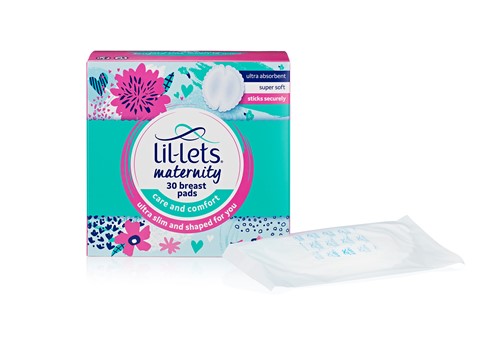Hey there, mum-to-be! Get ready to embrace some exciting changes on your pregnancy journey, including those happening in the breast department.
Congratulations! You’re expecting. But were you expecting this?
Pregnancy sometimes feels like a complete metamorphosis, and it’s no wonder: your body is growing and changing to accommodate the imminent arrival of a brand-new human being! But sometimes these changes can be a little confusing (breast leaks and bladder leaks, hello!), so we thought we’d explain the ins and outs of breast changes during pregnancy.
We’ll start by exploring the breast changes that occur at the beginning of your pregnancy. From there, we’ll discuss the changes that occur as your pregnancy progresses.
You may not even know for sure that you’re pregnant, but something is certain: your breasts seem to have changed overnight! In fact, breast changes may often be the first sign that you are indeed expecting, and whilst a pregnancy test will confirm that you are, breast changes are a pretty reliable pregnancy indication.
As early as week one into your pregnancy, breasts can start to feel different, with many people noticing a tingling sensation or even sore and tender breasts (especially nipples), this is because of rising hormone levels increasing blood flow to this area and preparing the breasts for lactation. In the early stages, you may even find you need to move up a cup size around this time too!
It seems your tummy is growing bigger by the minute, but that’s not all that’s growing! In addition to your growing bump, your breasts are also increasing in size, thanks to those marvellous pregnancy hormones.
If your breasts grow rather quickly in size, then you may develop stretchmarks, which is totally normal.
Stretchmarks may be normal and natural, but they’re not always very welcome! Also known as “striae”, stretchmarks may at first appear to be red or purple in colour, but as time progresses, they may change to a lighter shade of pink or even white.
In order to reduce the chances of your breasts getting stretchmarks during pregnancy, it’s important to apply stretchmark lotion, or a reputable brand of Vitamin E oil to your breasts both morning and night. Massaging your breasts may also help to promote blood flow to the area, which can assist in reducing or even stopping stretchmarks from appearing.
Remember that whilst stretchmarks can look quite angry and red at first, they will fade over time and be barely noticeable.
These are some of the early pregnancy breast changes. Later on in your pregnancy, you may also find that your breasts begin to leak from time to time, this fluid is called ‘colostrum,’ which is the fluid that comes in just before breast milk is produced, it can be yellow in colour and sticky too, but is completely normal and nothing to worry about. It’s simply part of the magical process that your breasts undergo so that they are able to produce and keep milk for your baby once they are born.

If you experience leaks, you may find our maternity breast pads and maternity wipes ideal for keeping you and your clothes fresh and dry. They’re super soft, comfortable, and incredibly absorbent, and will prevent milk stains on your bras and clothing, helping you feel a little bit more protected.
Lil-Lets Maternity Breast PadsThere’s no doubt about it that for many of us the areolae (that circle you notice around the nipple area) do get bigger, darker and suddenly more pronounced during pregnancy. This usually happens around the second trimester. You can blame the pregnancy hormones oestrogen and progesterone for a change in the pigment of the skin in this area. However, the areolae will revert back to their original colour a few months after birth.
You may also find that your areolae may soon be covered in small bumps, which are known as Montgomery glands or Montgomery tubercles. These sebaceous glands are there to produce fluid that keeps the skin on and around your nipples lubricated, so not to worry, they are completely normal and should not be picked at or squeezed.
As your breasts continue to grow, you will want to feel comfortable and supported. You may want to change the size of your bra, possibly even purchasing several bras in multiple sizes (go for a bra fitting if necessary). Choose bras made from a soft, breathable material like cotton. A supportive bra is a life changer! Nursing bras are also an option that can make this process slightly easier due to their functionality, the most important part is that you're comfortable and feel supported.
Massaging your breasts can loosen any blocked milk ducts and ease any pain or discomfort that you may be experiencing. Pease never be tempted to squeeze or pick at the nipple area, as this will make it sore and this could lead to infection.
There are stretch mark creams designed to prevent and fade stretch marks on your breasts. Applying cream or oil in the morning and in the evening, should this be something that becomes part of your daily routine, if you want to avoid or reduce stretchmarks.
Some mums may worry that their breasts will “sag” after pregnancy, but how your breasts look and feel after you’ve given birth may vary from person to person. During pregnancy, the ligaments in your breasts, which are called Cooper’s ligaments, will have stretched, and this may lead to your breasts seeming more droopy than they were before pregnancy.
Not to worry though, there are things that you can do to help prevent post-pregnancy sagging. These include exercising regularly (and wearing a bra that properly fits when you do!), moisturising your breasts and not losing your pregnancy weight too fast.
Whilst for many mums their breasts return to their pre-pregnancy size quite quickly, others may have breasts that have permanently changed in both their size and shape. Whether or not your breasts revert back to their original shape and size can be a result of many different things.
Remember even if your breasts never look the same as before your baby arrived, be body confident, everyone's different and breasts are well known for being unique.
The glands in your breasts that produce milk will have grown larger to help your body prepare to feed your little one. Now when you’re done with breastfeeding, or if you prefer to bottle feed, here's what typically happens.
Reduction in Size: The milk-producing glands and ducts that expanded during pregnancy and breastfeeding will shrink. As a result, your breasts may return to their pre-pregnancy size or become smaller it will be different for everyone.
Softening: Without the fullness of milk, your breasts will likely feel softer and less firm. This is a natural part of the process as the glandular tissue shrinks and is replaced by fatty tissue.
Changes in Shape: The shape of your breasts might change. Some people notice that their breasts appear less full or more saggy. This change is due to the stretching of the skin and ligaments that supported the larger, milk-filled breasts.
Skin Elasticity: The skin around your breasts might have stretched during pregnancy and breastfeeding. Depending on your skin's elasticity and genetics, you might notice some sagging or stretch marks.
Hormonal Changes: Hormonal changes can continue to affect your breasts for a while after you stop breastfeeding and it might take a few months for your levels to stabilise and for your breasts to settle into their new size and shape.
Weight Fluctuations: During and after pregnancy when weight can go up and down, it's perfectly fine for your breasts to take a while to adjust to your new body shape and reduction in size, so don't be in a hurry to lose that pregnancy weight.
Everyone's body responds differently to pregnancy, breastfeeding, and the transition afterward, so embrace this new stage in your life.
If you have concerns about the changes in your breasts or if you experience any unusual symptoms, it's always a good idea to consult with your healthcare provider.

Crying at the drop of a hat? Wondering why your favourite foods suddenly make you want to throw up? Chances are, you’re experiencing some of the first signs of pregnancy!
What to Expect in your 1st TrimesterUnderstand the reasons behind leaking breasts, and discover new ways to manage it with confidence.
Breast Leaks During PregnancyVaginal discharge is completely normal during pregnancy and often increases due to hormonal changes, especially rising oestrogen and increased blood flow to the vaginal area. It also plays a crucial role in keeping the vagina clean and preventing infections.
Vaginal Discharge In Pregnancy
Thanks to pregnancy hormones, most notably progesterone, the tissue in your breasts changes to prepare the breasts for the production and storage of milk for your new baby. You may find that your breasts grow larger during your pregnancy, and you may also notice changes to your nipples and areolae
Normal breast changes during pregnancy include a change in the size and shape of your breasts, as well as changes to the colour and size of your areolae and nipples. Your breasts are preparing to create and carry milk for your baby, and the hormones that help them do this may also cause your breasts to feel slightly uncomfortable and even painful at times during your pregnancy. There are also other body changes to expect during pregnancy such as gaining weight or losing your period.
You may notice pregnancy changes to your breasts as early as the first trimester. Your breasts may also feel quite sore and tender, and maybe even tingly, fairly early on in your pregnancy, including in the very first few weeks after you have conceived.
The breast changes that occur in early pregnancy include sensitivity as well as an increase in the size of your breasts themselves, your nipples and areolae. Some expecting mums may notice a change in the colour of their areolae, which may appear darker than they did before you fell pregnant.
Changes to your breasts can occur quite early on in your pregnancy, and you may notice changes to the colour of your nipples, size of your areolae and the size of your breasts in the first few weeks of your pregnancy. In fact, breast changes may often be the first sign that you are indeed expecting. Some expecting mums may feel alarmed by these early pregnancy breast changes, but rest assured that they are completely normal and to be expected.
The colour of your areolae, which may darken in colour. You may also notice that the veins in your breasts are more pronounced than what you are used to prior to pregnancy.